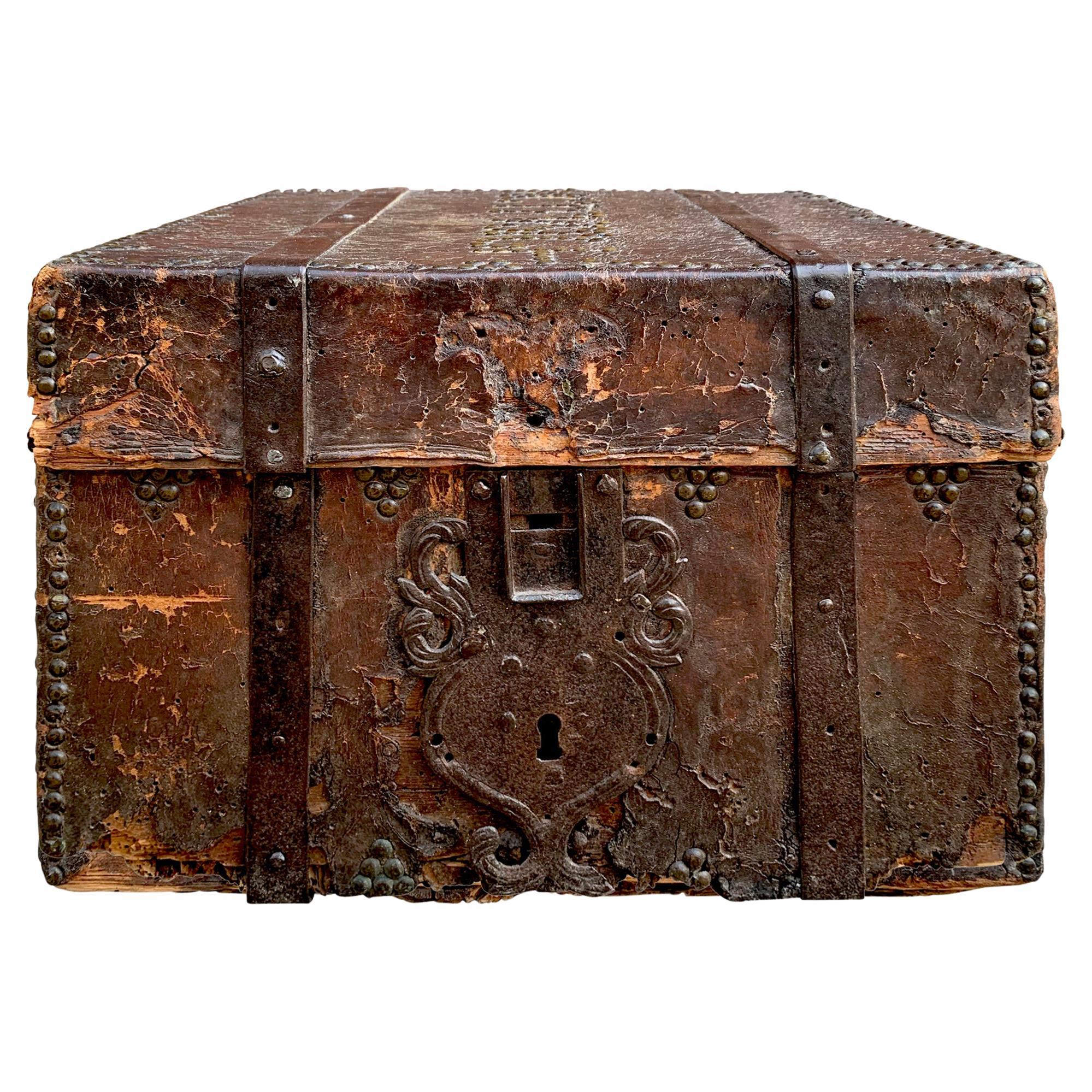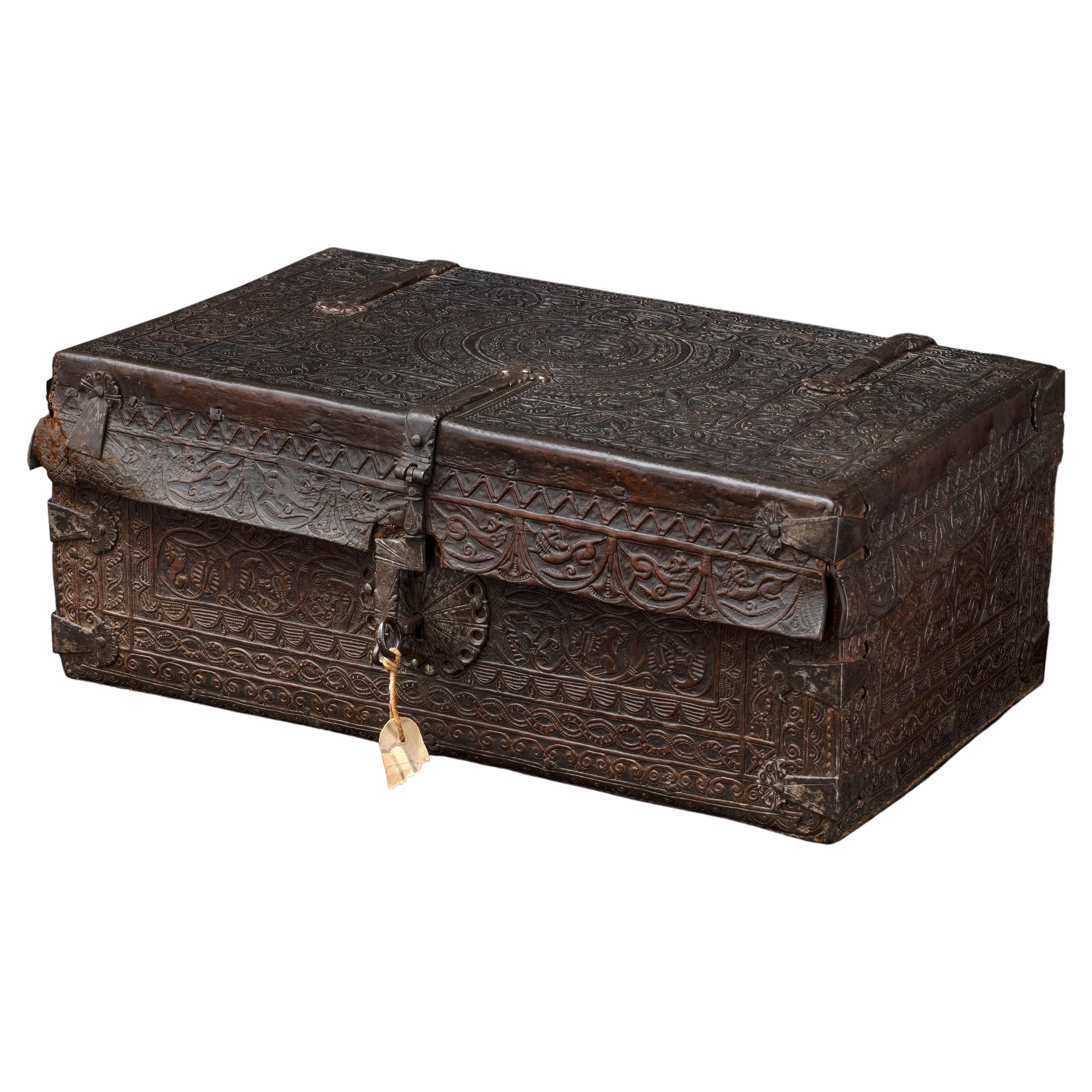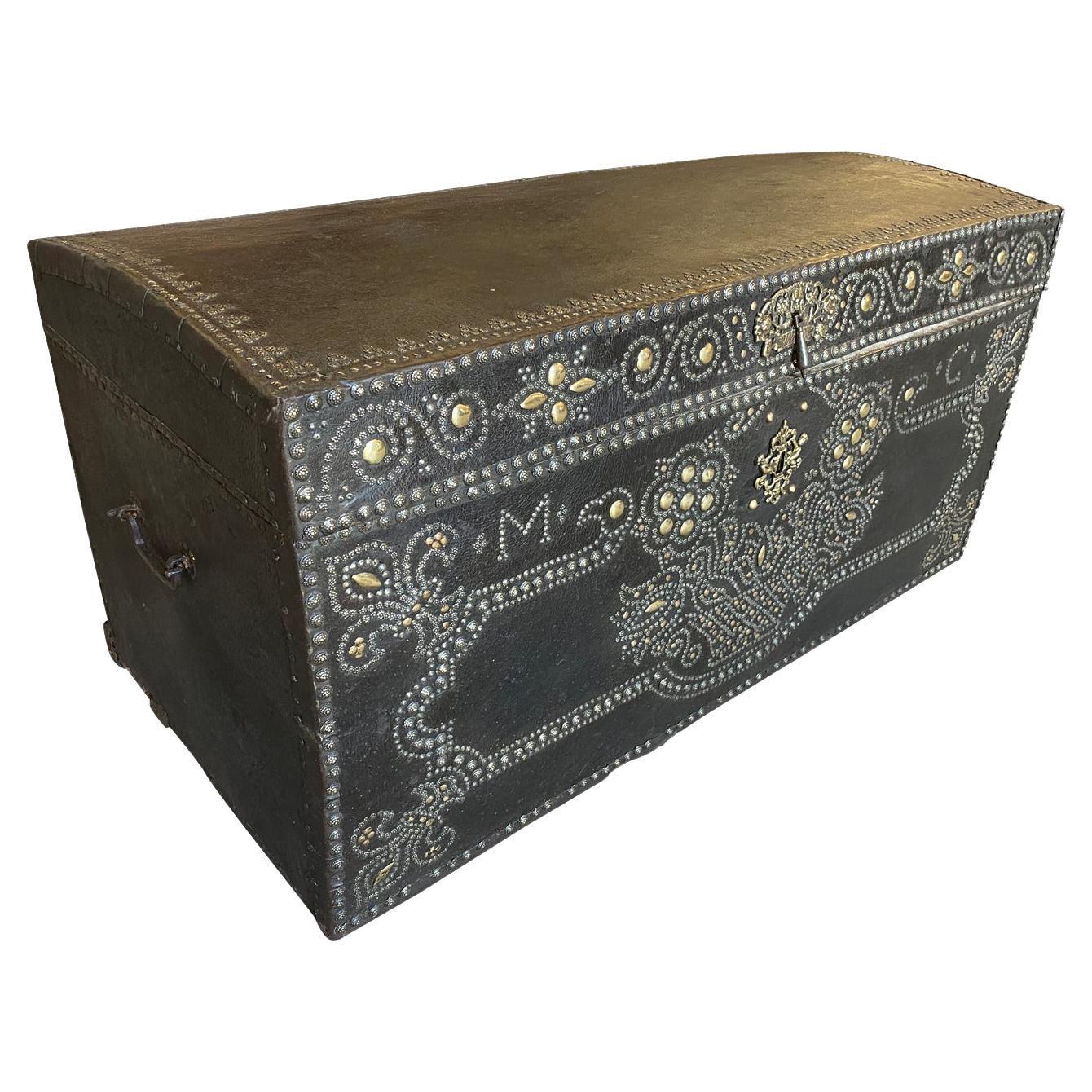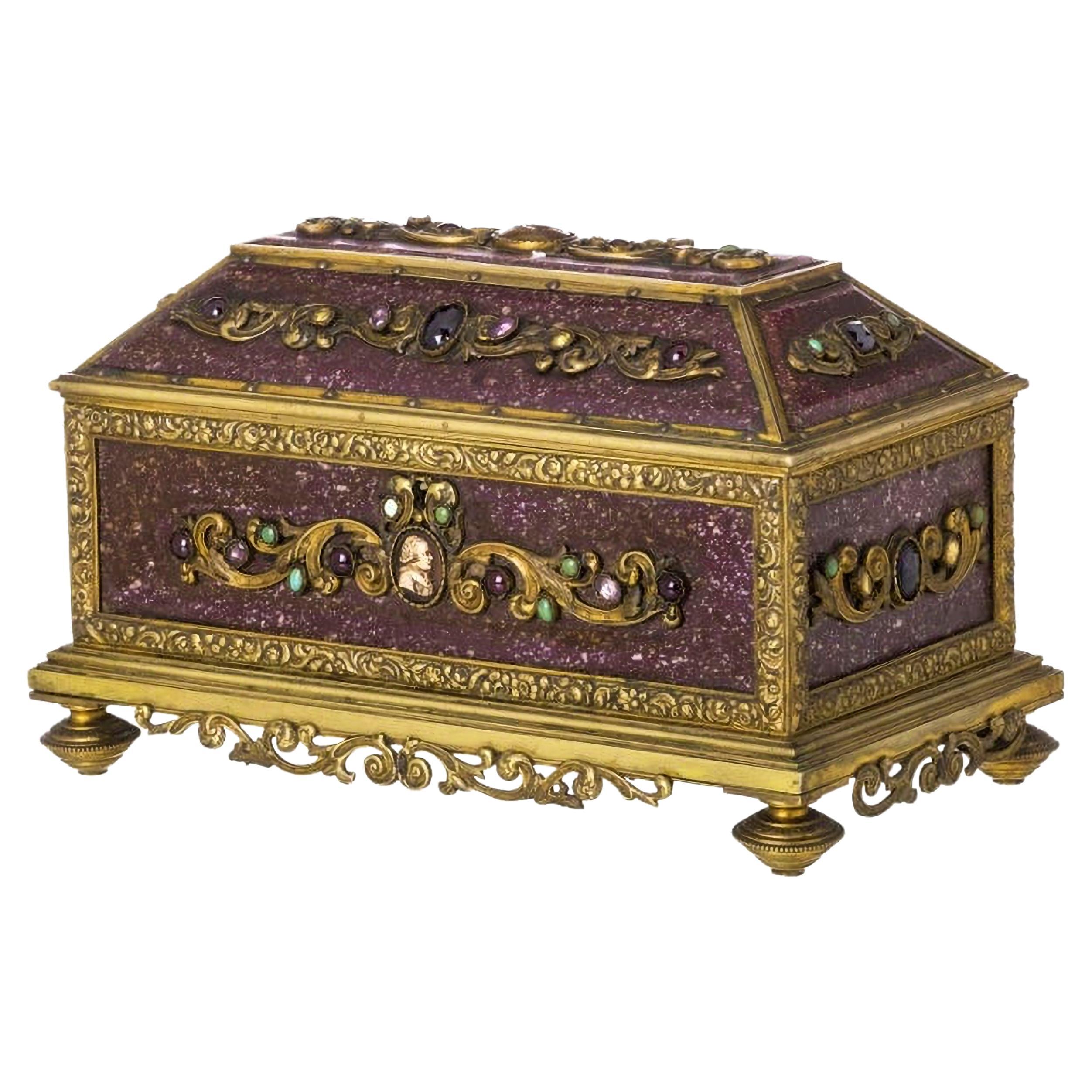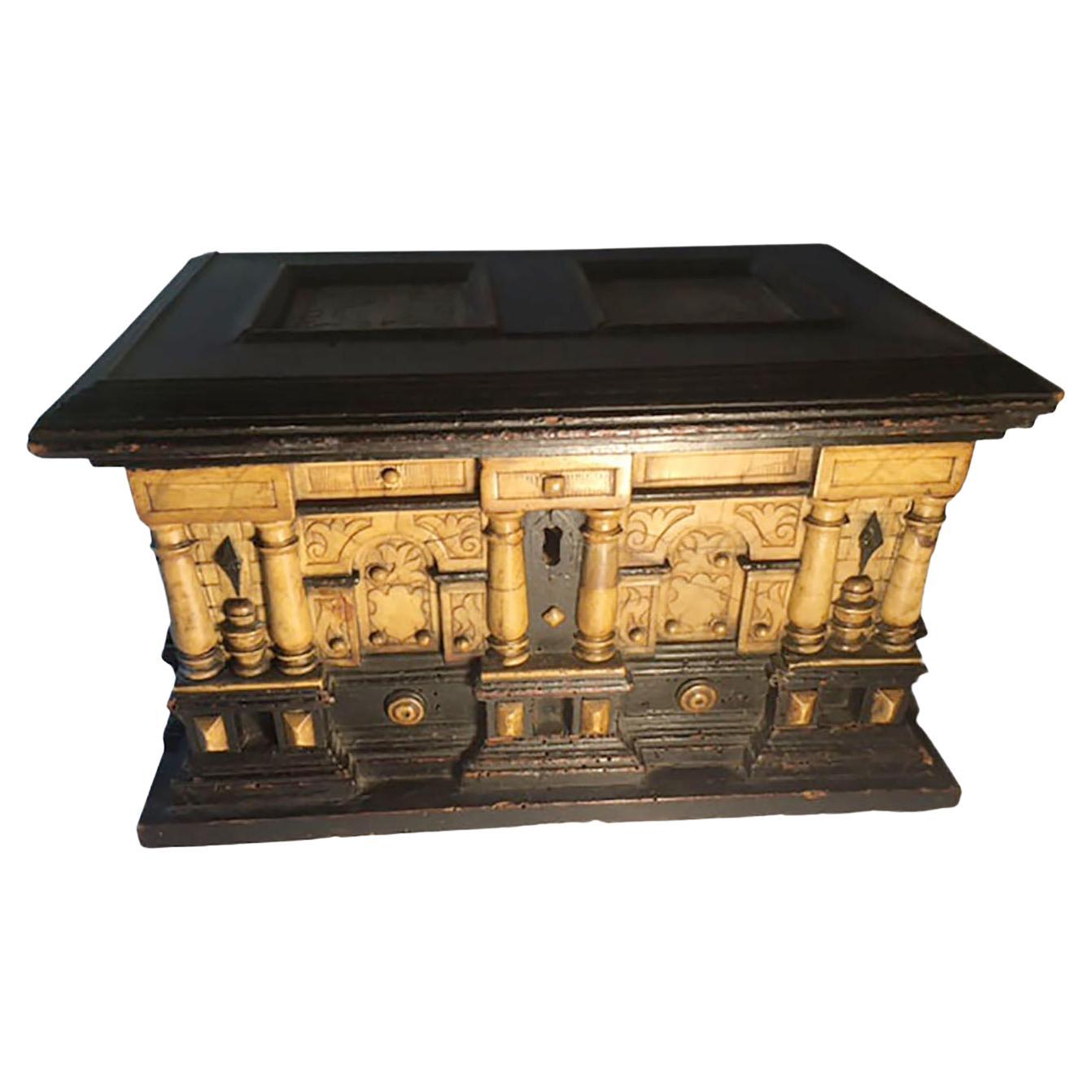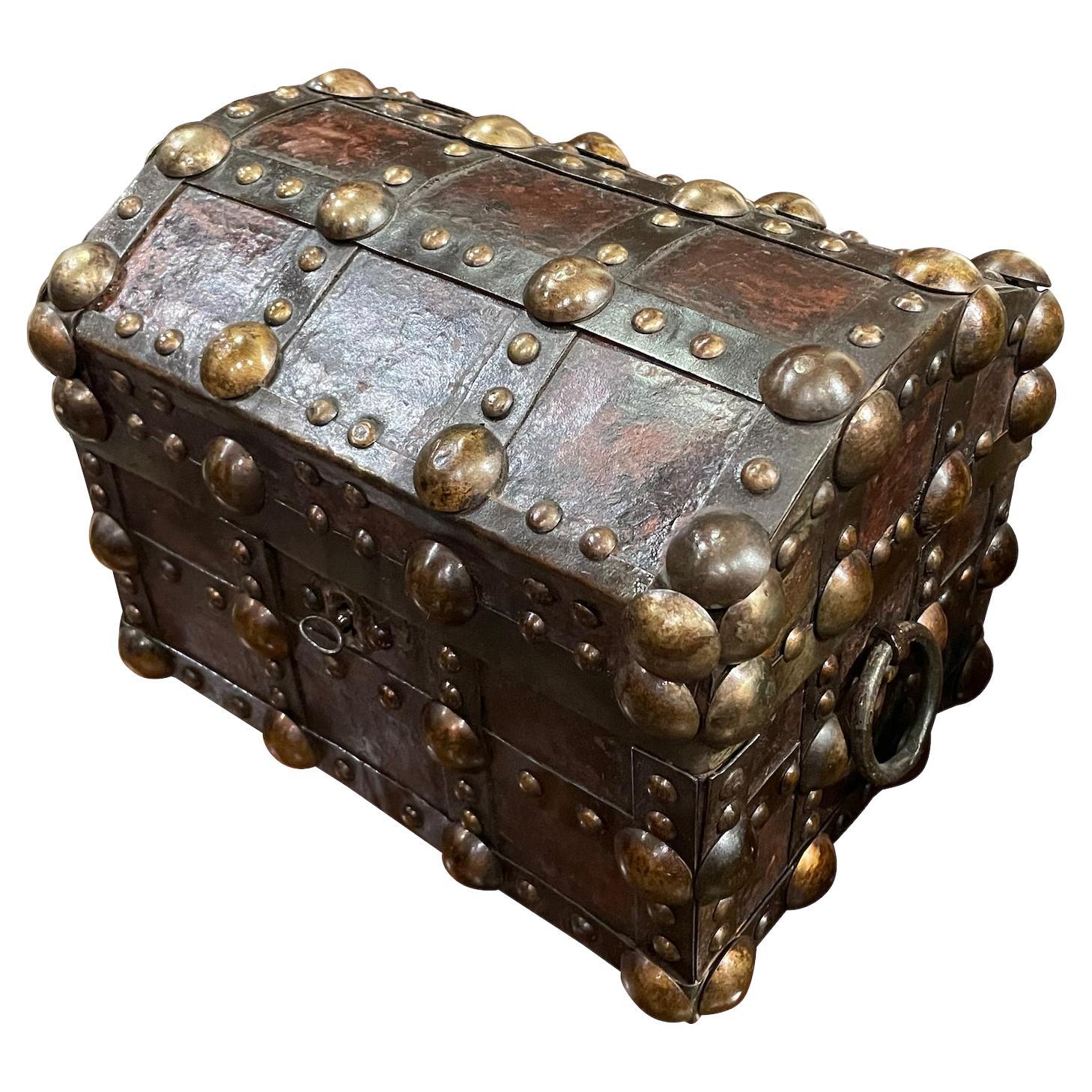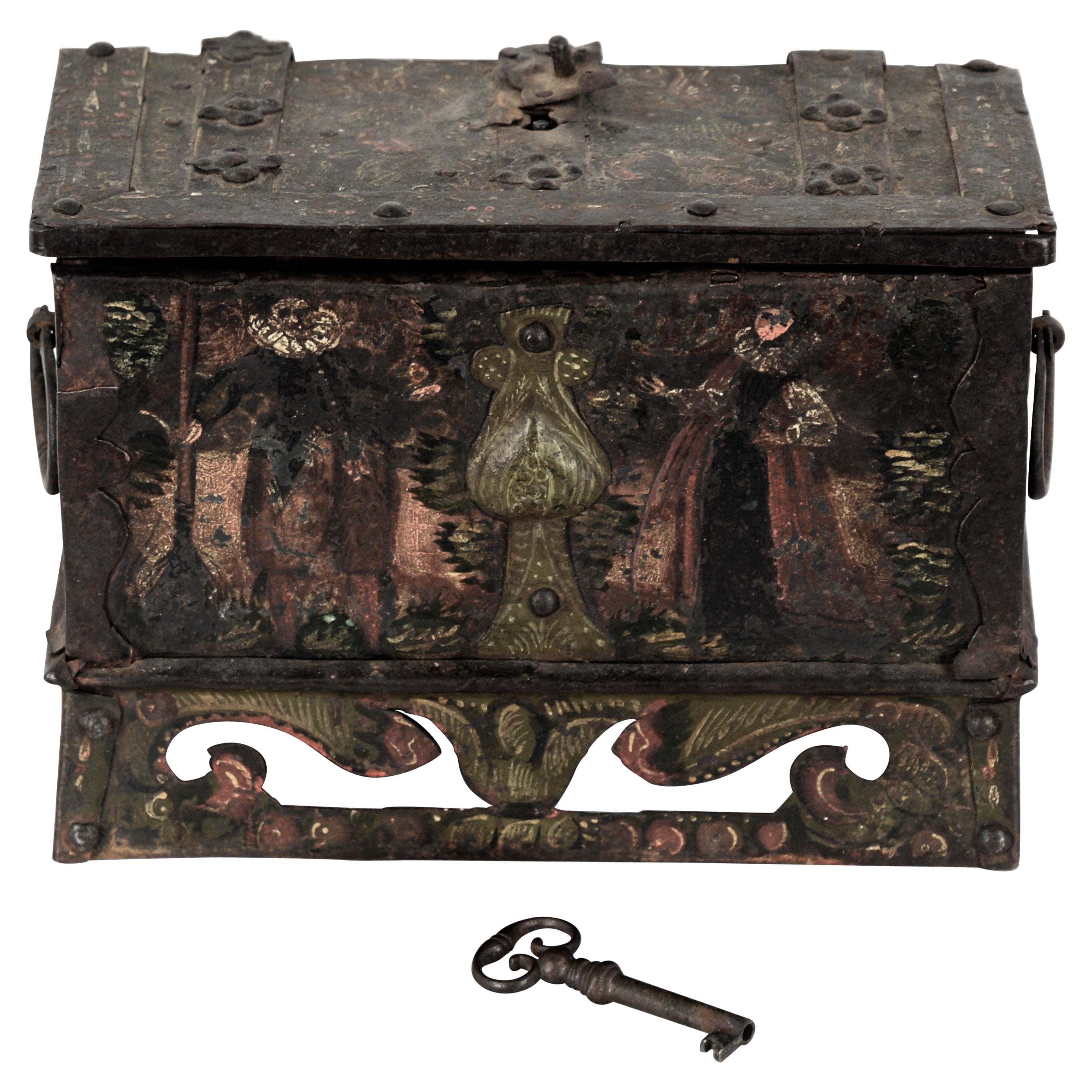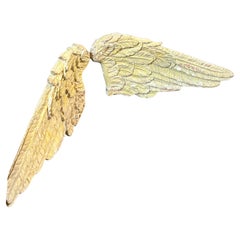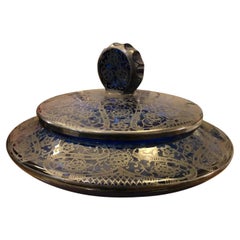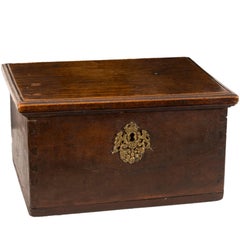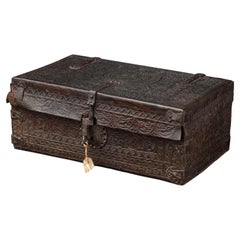
17th Century Baroque Wood, Iron and Fabric Italian Small Trunk
View Similar Items
Want more images or videos?
Request additional images or videos from the seller
1 of 21
17th Century Baroque Wood, Iron and Fabric Italian Small Trunk
About the Item
- Dimensions:Height: 9.85 in (25 cm)Width: 15.75 in (40 cm)Depth: 7.49 in (19 cm)
- Style:Baroque (Of the Period)
- Materials and Techniques:
- Place of Origin:
- Period:Mid-17th Century
- Date of Manufacture:c. 1650
- Condition:Wear consistent with age and use. Minor losses. Minor fading.
- Seller Location:Catania, IT
- Reference Number:1stDibs: LU7139231064022
About the Seller
5.0
Gold Seller
These expertly vetted sellers are highly rated and consistently exceed customer expectations.
Established in 2018
1stDibs seller since 2022
23 sales on 1stDibs
Typical response time: 2 hours
More From This SellerView All
- 20th Century Art Deco Wood Italian Jewelry BoxLocated in Catania, Sicilia20th Century Art Deco Jewelery Box. Delicate rhombus decoration typical of the Italian Art Deco period.Category
Vintage 1930s Italian Art Deco Jewelry Boxes
MaterialsFruitwood
- Early 18th Century Baroque Lacquered and Hand-Carved Wood Italian Angel WIngsLocated in Catania, SiciliaThese two hand-carved wood Italian angel wings are remarkable artifacts, exemplifying the grandeur and ornate beauty of the Baroque period. They are in good original condition with s...Category
Antique Early 18th Century Sicilian Baroque Figurative Sculptures
MaterialsWood, Lacquer
- 1940 Mid-Century Modern Blue Glass and Sterling Silver Italian Vanity BoxLocated in Catania, SiciliaIt's a large Italian vanity box made in the 1940s. The heavy blue glass and the sterling silver are in perfect conditions.Category
20th Century Italian Mid-Century Modern Decorative Boxes
MaterialsSterling Silver
- 1890s Louis Philippe Red and Blue Lacquered Wood Sicilian BoxLocated in Catania, SiciliaThis wood Sicilian box is a unique and culturally rich artifact, combining elements of 19th-century design, regional influence, and artistic craftsmanship. The box is crafted from wo...Category
Antique Late 19th Century Sicilian Louis Philippe Decorative Boxes
MaterialsFruitwood, Lacquer
- 1870s Louis Philippe Orange and Blue Lacquered Wood Sicilian BoxLocated in Catania, SiciliaThis wood Sicilian box is a unique and culturally rich artifact, combining elements of 19th-century design, regional influence, and artistic craftsmanship. The box is crafted from wo...Category
Antique Late 19th Century Sicilian Louis Philippe Decorative Boxes
MaterialsFruitwood, Lacquer
- 1890s Louis Philippe Brown and Green Lacquered Wood Sicilian BoxLocated in Catania, SiciliaThis wood Sicilian box is a unique and culturally rich artifact, combining elements of 19th-century design, regional influence, and artistic craftsmanship. The box is crafted from wo...Category
Antique Late 19th Century Sicilian Louis Philippe Decorative Boxes
MaterialsWood, Lacquer
You May Also Like
- Walnut and Metal Small Chest, 17th CenturyLocated in Madrid, ESSmall rectangular ark with a flat lid, with a lock of golden metal worked (crown on two facing lions, located on a garland of great size, and all around a symmetrical composition wit...Category
Antique 17th Century European Baroque Jewelry Boxes
MaterialsMetal
- Boiled Leather Trunk, Spanish, 17th CenturyLocated in Bruxelles, BELeather trunk Spanish, 17th century Boiled Leather, wood and iron Measures: 22 x 53 x 32 cm. Provenance : - collection Metz-Noblat, Château de Clevant, France Rectangular trunk of the form and size of a small suitcase with wrought iron hinges and lock-plate. Wood, covered with leather, cut and embossed with every surface of the thick cow hide covered in interlace, zoomorphic features. The construction method is boiled leather, often referred to by its French translation cuir-bouilli: a process used to change flexible, vegetable-tanned leather into rigid, moulded objects. For shaping of the vegetable-tanned leather, heat and moisture were used, as indicated by the term boiled leather. No written medieval sources describing the production of decorated cuir bouilli objects survive, so knowledge of the process relies on the important studies of the Scottish leather historian John William Waterer. A large range of methods, materials and techniques could be used in various combinations. The vegetable-tanned leather, made supple with moisture and heat, was stuffed, shaped and nailed to the rigid wooden coffer support. The stuffing material was probably modeled beeswax or stearin wax. To shape the leather, to create its topography, « Cushions » were made by lacing a thread through an awl hole and attaching the flexible leather and stuffing to the rigid wooden support on the bottom. Then the decoration was done: lines were incised through the upper layer of the leather (epidermis) with different thicknesses of knives or needles. Contours were created with deep v-shaped cuts, decoration with thin incision and final details with a needle point. For the incision and pouncing stage, the leather was probably kept heated and moistened for suppleness. Once dry, the leather would be hard and rigid. the saturated leather is worked over a form, possibly even damp sand, with the pattern shaped using bone or wooden tools. Compare to metal, leather was lighter and it offered protection from cuts and punctures. Cuir bouilli objects were produced by specialist leather workers and needed skillful craftsmanship. The surface is filled with roundels shaped foliages enclosing animals, lions and peacocks. The foliate arabesques creating a vegetal connection tweet the animals create the impression of a lush verdant space . The vegetal pattern here employed in combination with geometrical pattern came from the pre-islamic artistic traditions of the Byzantine and Sasanian empires. An aspect of Islamic geometry Is the basic symmetrical repetition and mirroring of the shapes that create a sense of harmony. The decoration of this truck is inspired by the islamic « arabesque » a form of vegetal ornament composed of spirals, intertwining plants and abstract curvilinear motifs. An arabesque character is given to the birds of the decorations through extreme stylisation. This arabesque maintained the classical tradition of median symmetry, freedom in Detail and heterogeneity of ornament. The presence of the peacocks is a paradisiacal allusion: in popular Islamic literature they were among the original inhabitants of the garden of Paradise expelled with Adam and Eve. Peacock as a decorative motif may have originated in the West, despite their eastern provenance. There was an ancient belief that the flesh and feathers of peacock do not decay. This led to the peacock becoming a christian symbol for Christ’s resurrection. Renowned for their decorative wall hangings, seventeenth-century Spanish leatherworkers also produced utilitarian objects, such as this trunk. A similar trunk is on display at the Metropolitan museum of art ( 09.158.1). Related literature : Davies L. 2006. Cuir bouilli. Conservation of leather and related materials, 94-102, Oxford: elsevier Butterworth-Heinemann Grabar, Oleg. The Mediation of Ornament. Princeton: Princeton University Press, 1992 Gabriela Germana Roquez, "El mueble en el Peru en el siglo XVIII...Category
Antique 17th Century Decorative Boxes
MaterialsIron
$13,849 Sale Price30% Off - Exceptional French 17th Century Marriage TrunkLocated in Atlanta, GAAn exceptional 17th century Marriage Trunk - Malle - from the Provence region of France. Soundly constructed from wood and clad in leather. Beautifully ...Category
Antique 17th Century French Trunks and Luggage
MaterialsLeather
- 17th Century Italian Leather BoxLocated in Chicago, ILA stunning 17th century Italian leather covered wood trunk covered in brass nail heads, some spelling out a word on top, and with iron strap hinges a...Category
Antique 17th Century Italian Baroque Decorative Boxes
MaterialsLeather, Wood
- 17th Century Italian Ballot Voting Urn Carved Blue and Red Painted WoodLocated in Milan, ITAntique Italian ballot urn shaped wooden box, carved and painted, coming from Tuscany, Monte San Savino near Arezzo in Central Italy. This ballot urn is an excellent example of a 17th century wooden voting box...Category
Antique Mid-17th Century Italian Baroque Decorative Boxes
MaterialsPine
- COUNTER CASH 17th Century FlemishBy Europa AntiquesLocated in Madrid, ESCOUNTER CASH 17th Century Flemish in walnut wood with inlays, consisting of two drawers and a drawer. Signs of use. Dim.: 31.5 x 44 x 27 cm good stateCategory
Antique 17th Century Dutch Baroque Decorative Boxes
MaterialsWood
$2,594 Sale Price20% Off
Recently Viewed
View AllMore Ways To Browse
Small Antique Wood Trunk
Italian Antique Trunk
Antique Baroque Trunk
Antique Trunk 17th
Antique Baroque Carved Trunk
Antique Desk Boxes
Colored Glass Box
Retro Industrial Box
3 Piece Decorative Boxes
Leather Box Lid
Decorative Box Containers
Covered Container
Vintage Mahogany Box Boxes
Vintage Mahogany Box
Box Crest
Antique Ivory Boxes
Antique Ivory Box
Red Wooden Box

